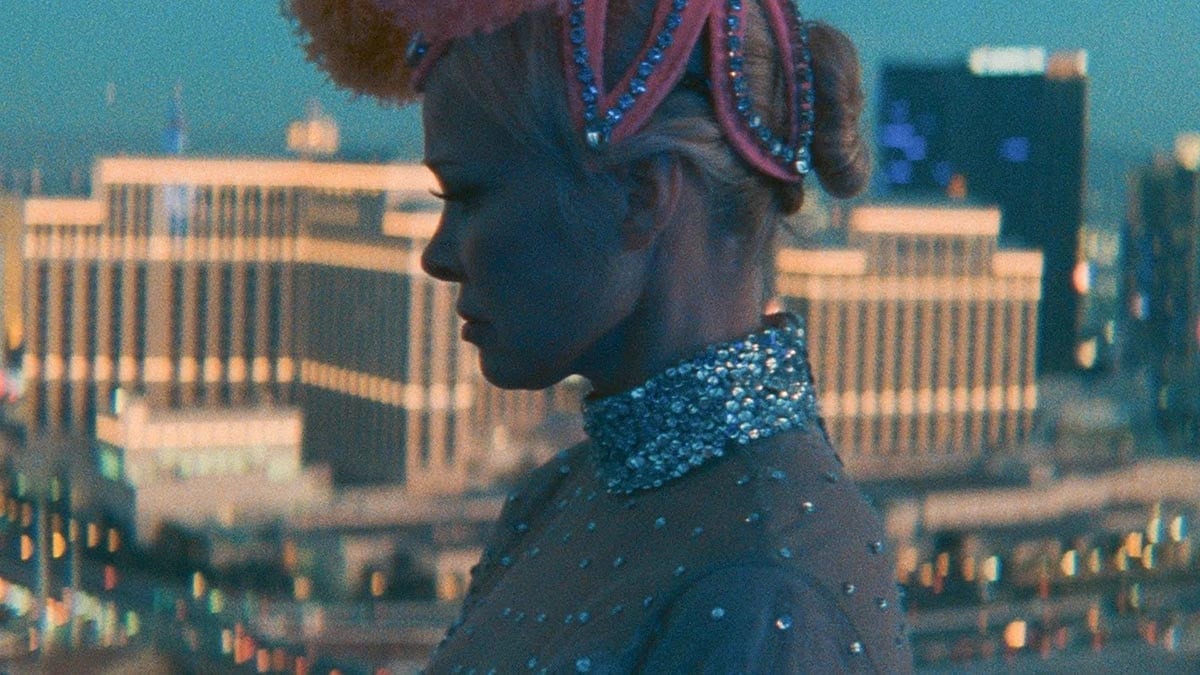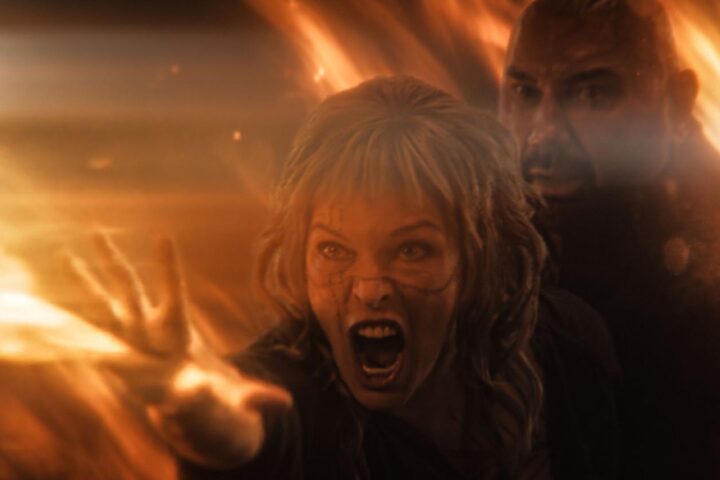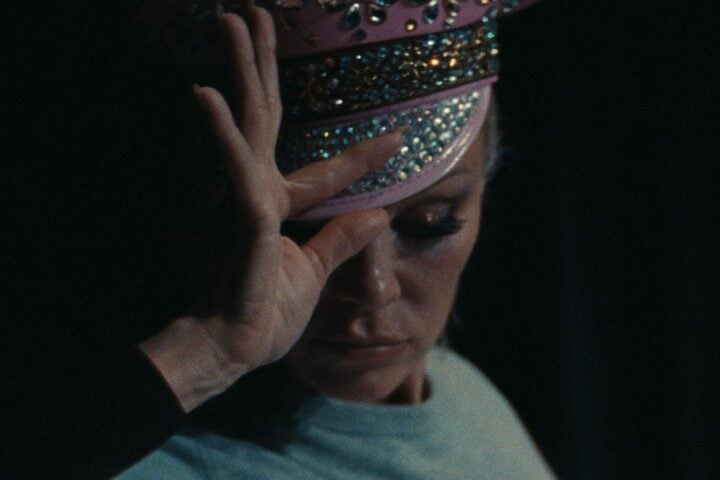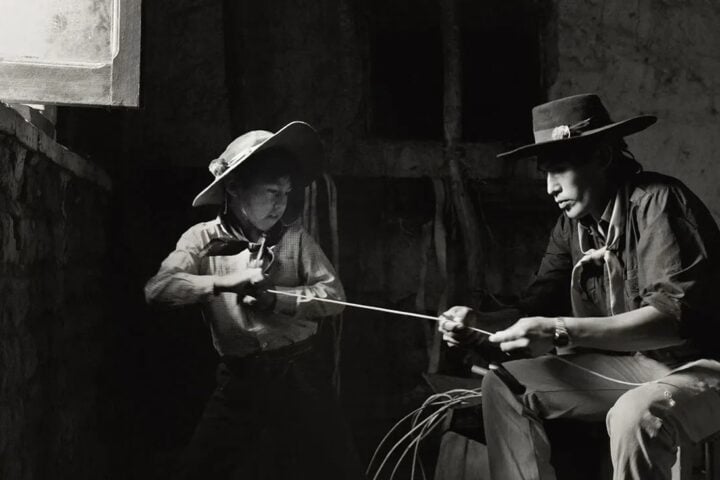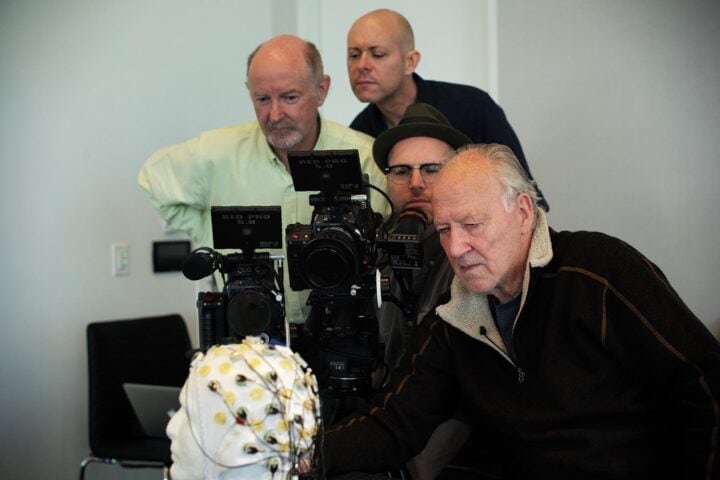Gia Coppola switches gears from California juvenescence to age and decline in Las Vegas with The Last Showgirl. Puffing by on a chiffon cloud of false eyelashes and margarita mix, the film is less a character study than a numbly tragic workaday fantasia held aloft by Pamela Anderson in a performance that seems to grasp beyond the bleary-eyed edges of Coppola’s screen for larger truths about the choices women make to feel seen.
Anderson stars as Shelly, the most tenured dancer at Le Razzle Dazzle, a topless revue that’s waned in popularity as more raunchy acts have become the flavor du jour on the Strip. When the show’s producer, Eddie (Dave Bautista), announces that the show will be closing in a number of weeks, younger dancers like Jodie (Kiernan Shipka) take it in stride, but Shelly sees 30 years of her life wasted. Leaning on her best friend and former showgirl Annette (Jamie Lee Curtis) for guidance as to a way forward, Shelly attempts to reconcile with her estranged daughter, Hannah (Billie Lourd), as the curtain begins to fall on a decades-long daydream.
Of Gia Coppola’s three features to date, The Last Showgirl, more than Palo Alto and Mainstream, has the closest spiritual and aesthetic kinship to the work of her celebrated aunt. But while Sofia Coppola tends to trap her characters in obsessively composed domestic cages, Gia keeps Shelly free-roving but conspicuously separate from the city she loves.
Autumn Durald Arkapaw’s 16mm photography captures Sin City as a lissome and gritty liminal space, but Anderson is often set apart from the blinking lights and billboards, taking lunch as she drifts through a vulgar simulacrum of the Paris she’ll never actually set foot in or practicing dance routines perched atop her venue’s roof—a bird of paradise more tethered to an idea of the place than the place itself. Further adding to the sense of disconnect, Coppola and Arkapaw shoot The Last Showgirl in a hazy shallow focus, with lenses that blur and disperse light toward the edge of the image, giving Shelly’s dreamy myopia a buoyant visual life.
The script, though, has all the lift of a lead balloon. Penned by Kate Gersten, The Last Showgirl is riddled with clumsy emotional exchanges about motherhood, aging, and family that feel counterintuitive to the elliptical way in which Coppola otherwise captures Shelly’s road to nowhere. With a gossamer charm that carries her over the screenplay’s rougher patches, Anderson finds a guileless, fumbling truth in Shelly’s willful blindness, lack of personal accountability, and half-crazy desire to live in a world of tacky fantasy. Like a Marilyn-voiced Blanche DuBois in ostrich feathers, the bumps and bruises of Shelly’s world never truly dim her shine despite the sharp razor of pain that flashes between the cracks in her persistent smile.
There’s a meaty extra-textual layer to chew over in examining Anderson’s public persona in tandem with the ugly realities that Shelly is forced to confront, and though The Last Showgirl often feels like a rhinestone-by-numbers affair, it sharply intuits the socio-economic pressures that lead women to make choices in the moment that society will ultimate punish them for down the road when they reach a certain age. It’s almost impossible not to draw comparisons to Sean Baker’s Anora in this regard. Though Baker’s film may be more entertaining and clear-eyed in its intent, Coppola finds a rawer, less consolatory sort of empathy in The Last Showgirl that makes Baker appear much like the moralistic looky-loo that he’s often accused of being.
For some, The Last Showgirl will feel as insubstantial as the jewel encrusted pageant its tragic heroine retreats into to forget the cruel indignities of life outside the stage lights, but there’s something rapturously sad in its evanescent qualities. Like the pair of fabric wings Shelly keeps accidentally ripping or the myth of a city where dreams come true, Coppola has crafted a film that feels fleeting and illusory by design. We watch the unremarkable events of Shelly’s last two weeks with Le Razzle Dazzle as if passing through the looking glass of memory, where time wears away the sordid details, and only glitter remains.
Since 2001, we've brought you uncompromising, candid takes on the world of film, music, television, video games, theater, and more. Independently owned and operated publications like Slant have been hit hard in recent years, but we’re committed to keeping our content free and accessible—meaning no paywalls or fees.
If you like what we do, please consider subscribing to our Patreon or making a donation.

